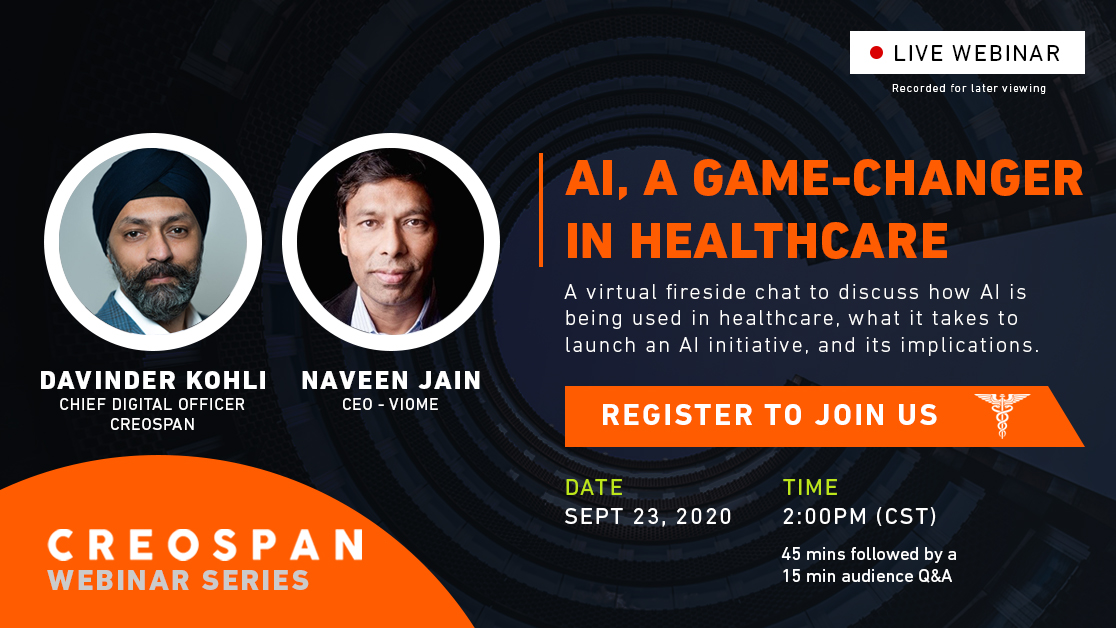The New Technology Leader
June 28, 2020Docker swarm 101 – A Quick guide to learning docker swarm
August 11, 2020Providing Patient-centric Healthcare
by Davinder Kohli
The “Future of Work” was a popular topic in the conversations and presentations I attended at the World Economic Forum’s Annual Meeting of the New Champions held in Tianjin, China in 2018. That year, for the first time, the Annual Meeting brought together experts and decision-makers in the World Economic Forum’s newly launched Fourth Industrial Revolution Councils. The mission of these councils is to help policymakers and businesses strike the right balance between enabling emerging technologies and proactively mitigating the social risks that can result.
The Fourth Industrial Revolution, categorized by the fusion of technologies, involved the combination and transformation of different core technologies to create new products and markets. These included Artificial Intelligence (AI), the Internet of Things, Blockchain, autonomous and urban mobility, drones, and precision medicine.
According to Dr. Klaus Schwab, founder and executive chairman of the World Economic Forum, compared to the previous industrial revolutions, the Fourth Industrial Revolution is evolving at an exponential rather than a linear pace. While all this rapid innovation and transformation has the power to improve the quality of life for populations around the world, this revolution could yield greater economic inequality.
Dr. Schwab further discussed how automation will result in a net increase in rewarding jobs. However, the overall job market will be segregated into “low-skill/low-pay” and “high-skill/high-pay” segments, which in turn could lead to an increase in social tensions. Additionally, this “haves-and-have-not” scenario could result in degraded healthcare in lower economic segments of society.

Social Determinants of Health
Little did we imagine in 2018 that a pandemic like COVID-19 would occur and cause a draconian shift in the labor market. Adoption of a low-touch economy and disruptions in the supply chain, initiated by COVID, have pushed businesses to further automate their operations. While this punctuated equilibrium is necessary, we must look out for those that are highly vulnerable to disasters and impacted through this automation.
The level of the population’s vulnerability to disasters is determined by what is known as the Social Vulnerability Index (SVI). SVI is a weighted score of the different elements of the Social Determinants of Health (SDoH). According to the World Health Organization, SDoH is the conditions in which people are born, grow, work, live, and age, and the wider set of forces and systems shaping the conditions of daily life. COVID has shifted the tectonic plates of SDoH and its imperative for healthcare companies to understand this shift.
Impact on Healthcare
Among the many challenges faced by healthcare companies lowering the overall cost of care and improving patient outcomes is pivotal. A big part of healthcare costs involves treating patients with chronic conditions, emergency room (ER) visits, and readmissions. Some of these costs could be reduced or avoided by increasing patient engagement, especially those with a higher SVI.
The key is to procure and link different data elements identifying the socioeconomic (education, poverty, income, employment), housing and transportation (housing density, mobile homes, vehicle access), household composition (age over 65, age below 18, disability), and sociological (minority status, language) conditions of the patient population.
By combining this social structure data with the healthcare provider, patient-generated, and financial data using advanced analytics (graph databases and predictive algorithms), healthcare services can be designed and personalized around the patient.
Patient-centric Care
These personalized healthcare services should entail key areas such as providing health and therapeutics education, meal plans, access to transportation, payment services, community support, and active health monitoring. Tech-business leaders should enable these services through cloud and mobile-based digital platforms, providing patients ubiquitous access in a comprehensive manner.
Healthcare firms could partner up with ride-share companies to provide transportation access to patients for regular checkups and early diagnosis, creating a win-win situation for both providers and patients and helping to avoid unnecessary visits to the ER. Similarly, partnering up with food delivery services and enabling patients to seek nutritional or special dietary meals during treatment and post-admission hospitalization can prevent readmission’s.
Additionally, tech-business leaders need to make these digital platforms intelligent using AI technologies, such as natural language processing (NLP). This will increase patient engagement as such platforms can provide contextually relevant information without having the patients wait for getting answers from providers or spending countless hours scouring the internet.
As healthcare companies explore opportunities to become more patient-centric, they need to be mindful of shifts in the labor market and the increase in SVI caused by the Fourth Industrial Revolution and accelerated by the current pandemic. While such awareness will help bring down healthcare costs and increase the quality of patient health, it also has the potential to reduce the “low-skill/low-pay” population’s vulnerability to disasters.




